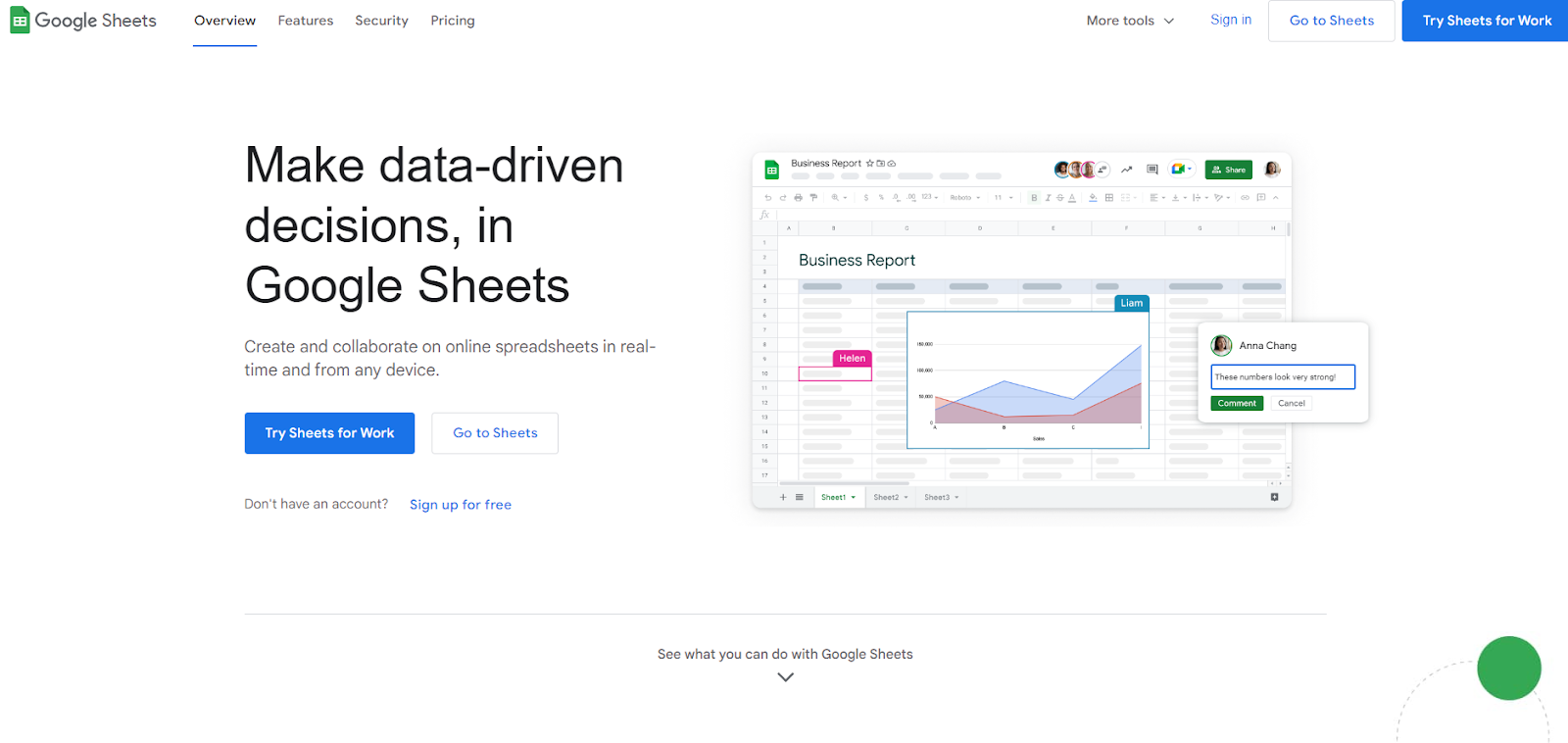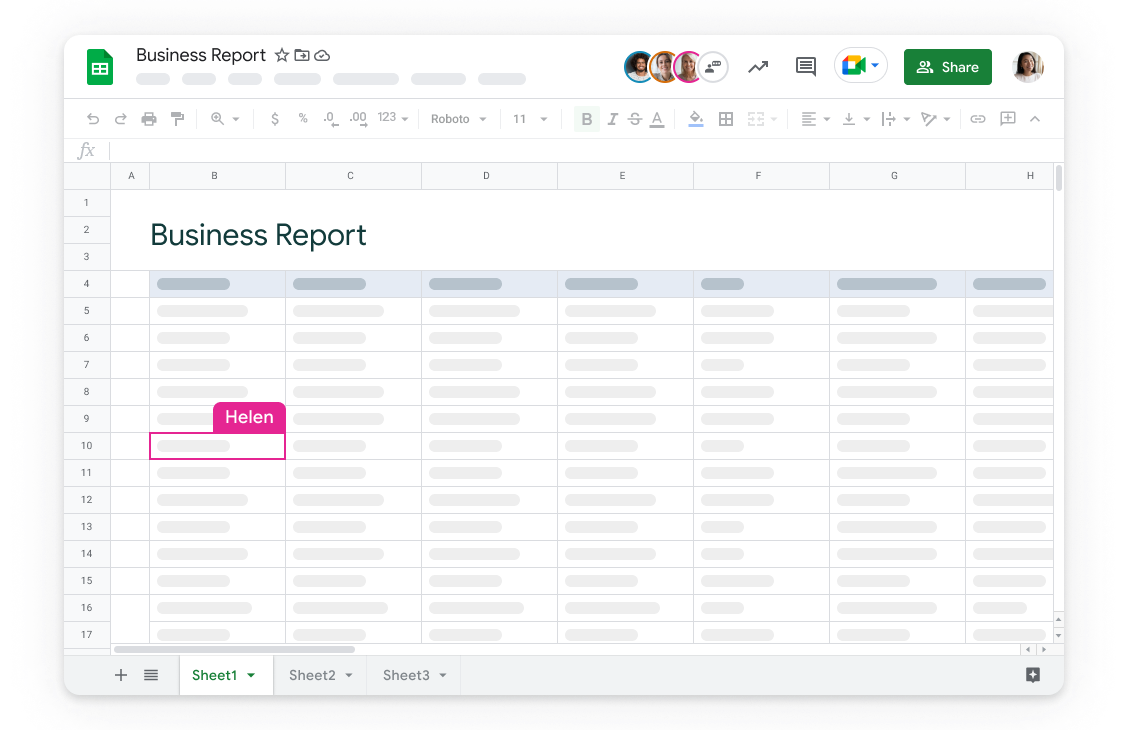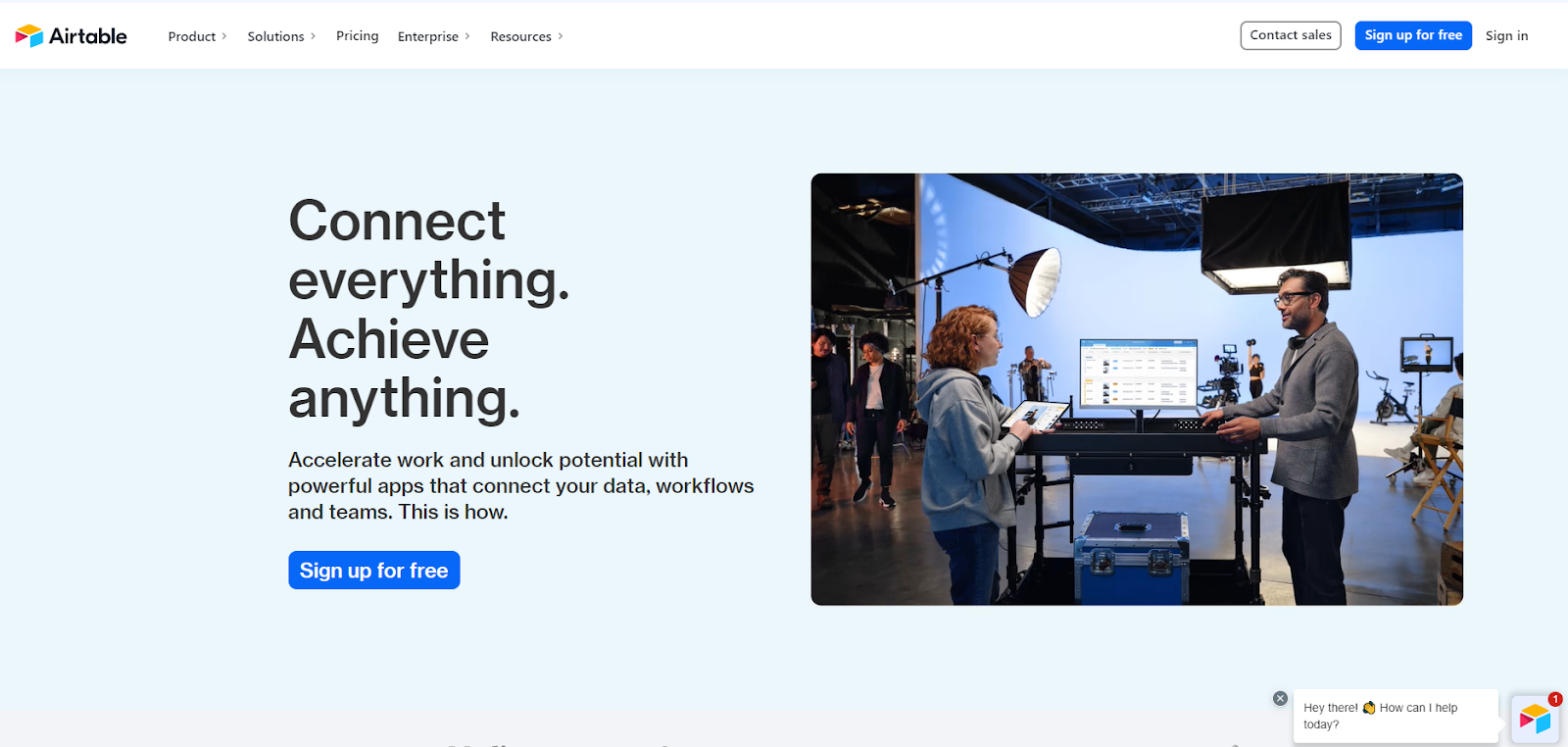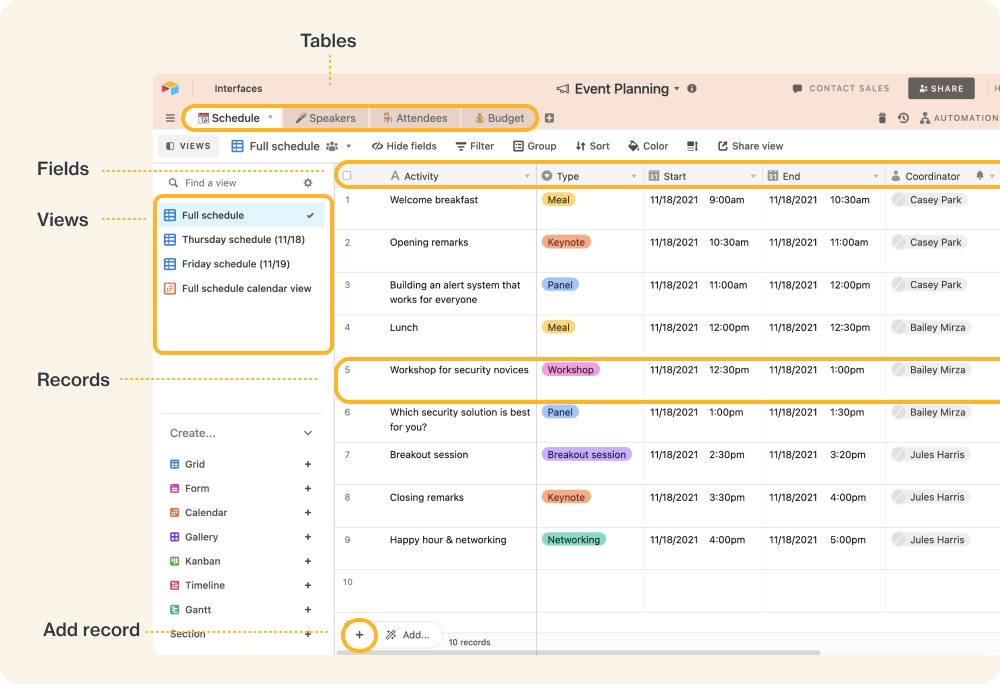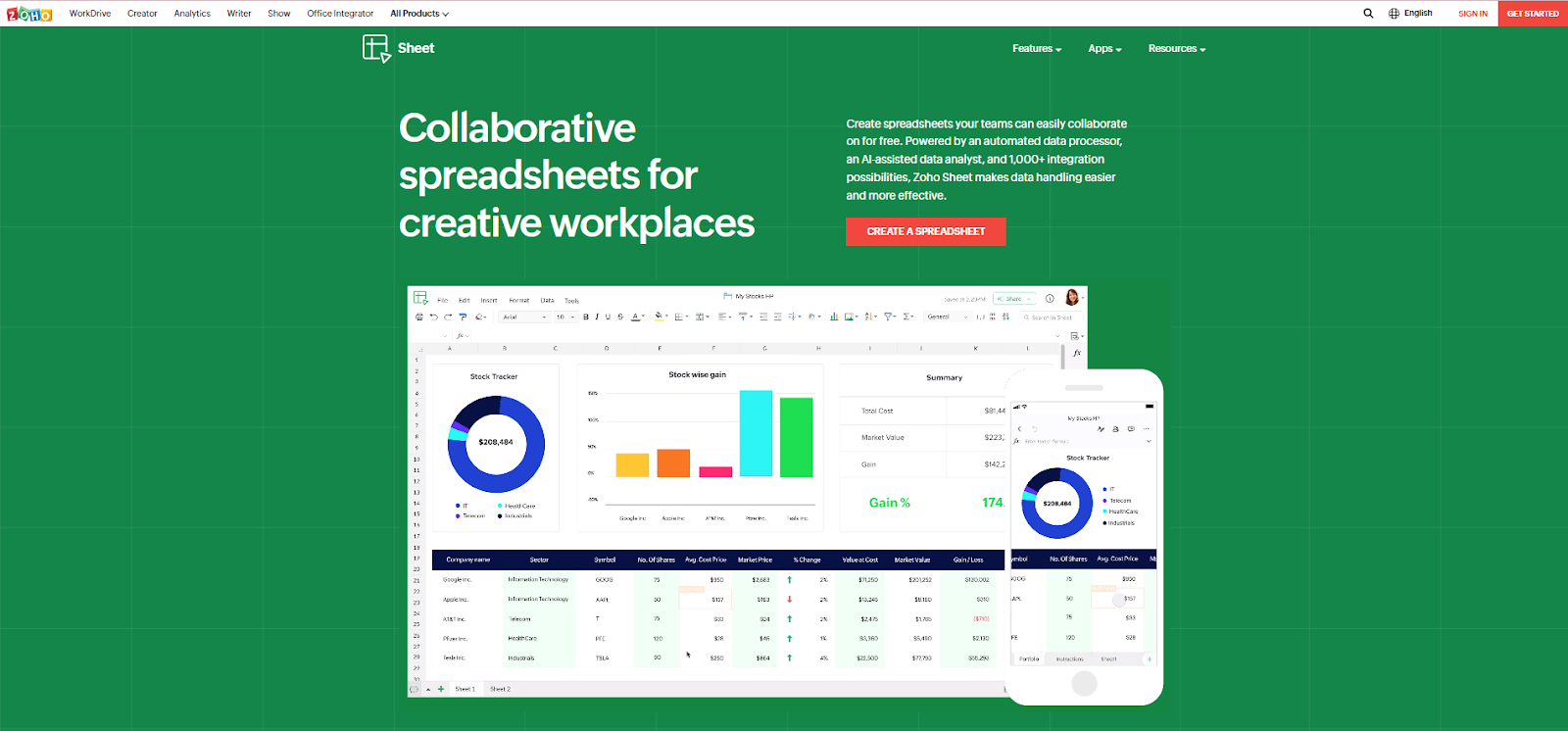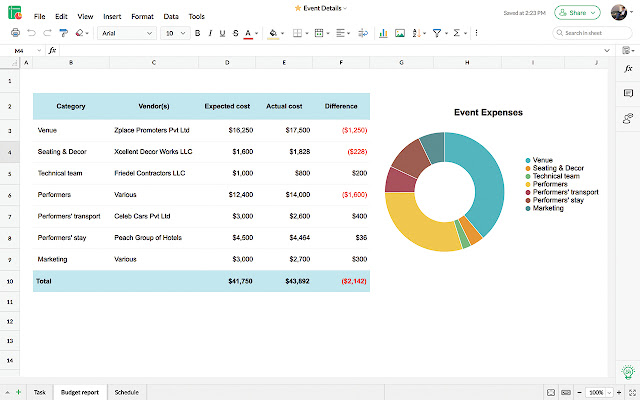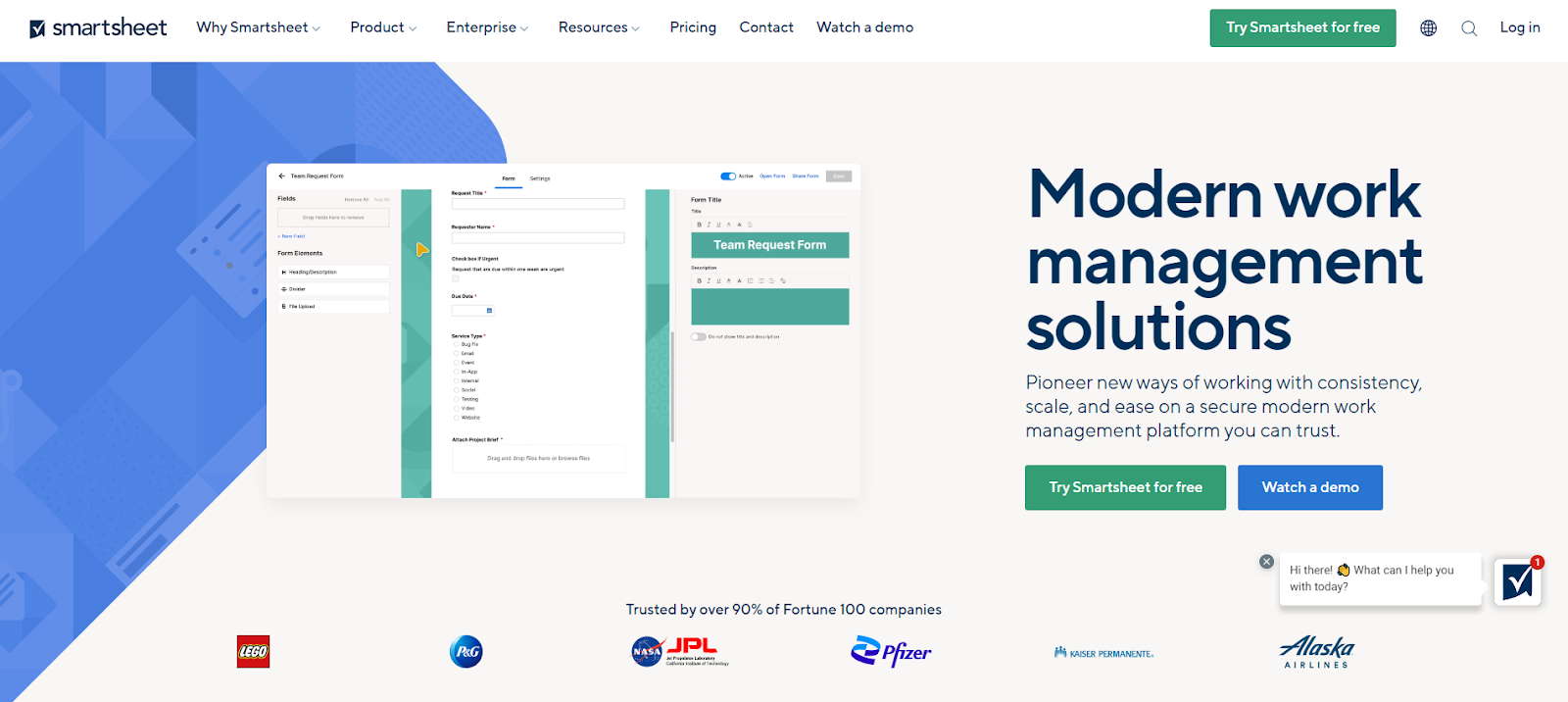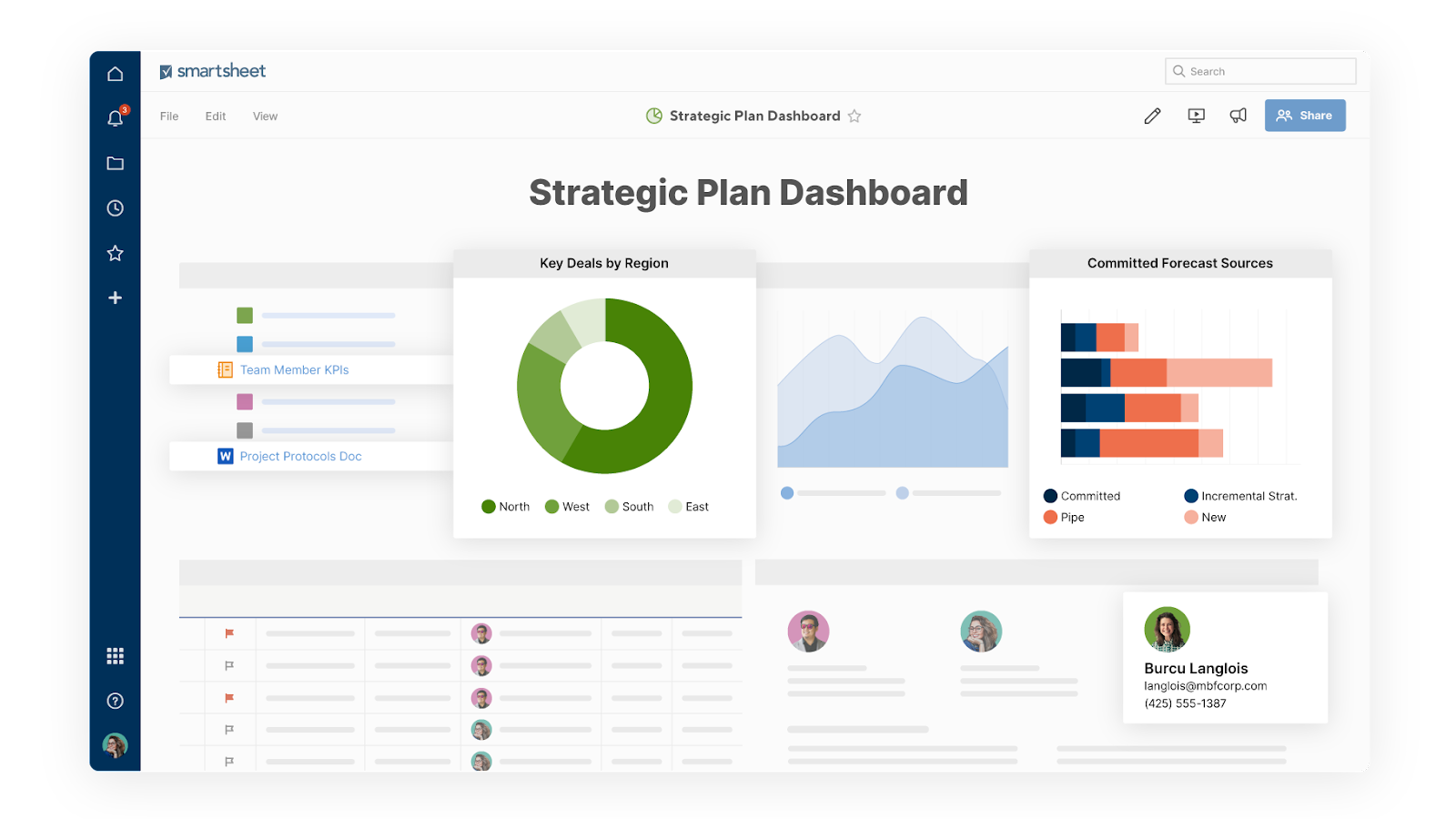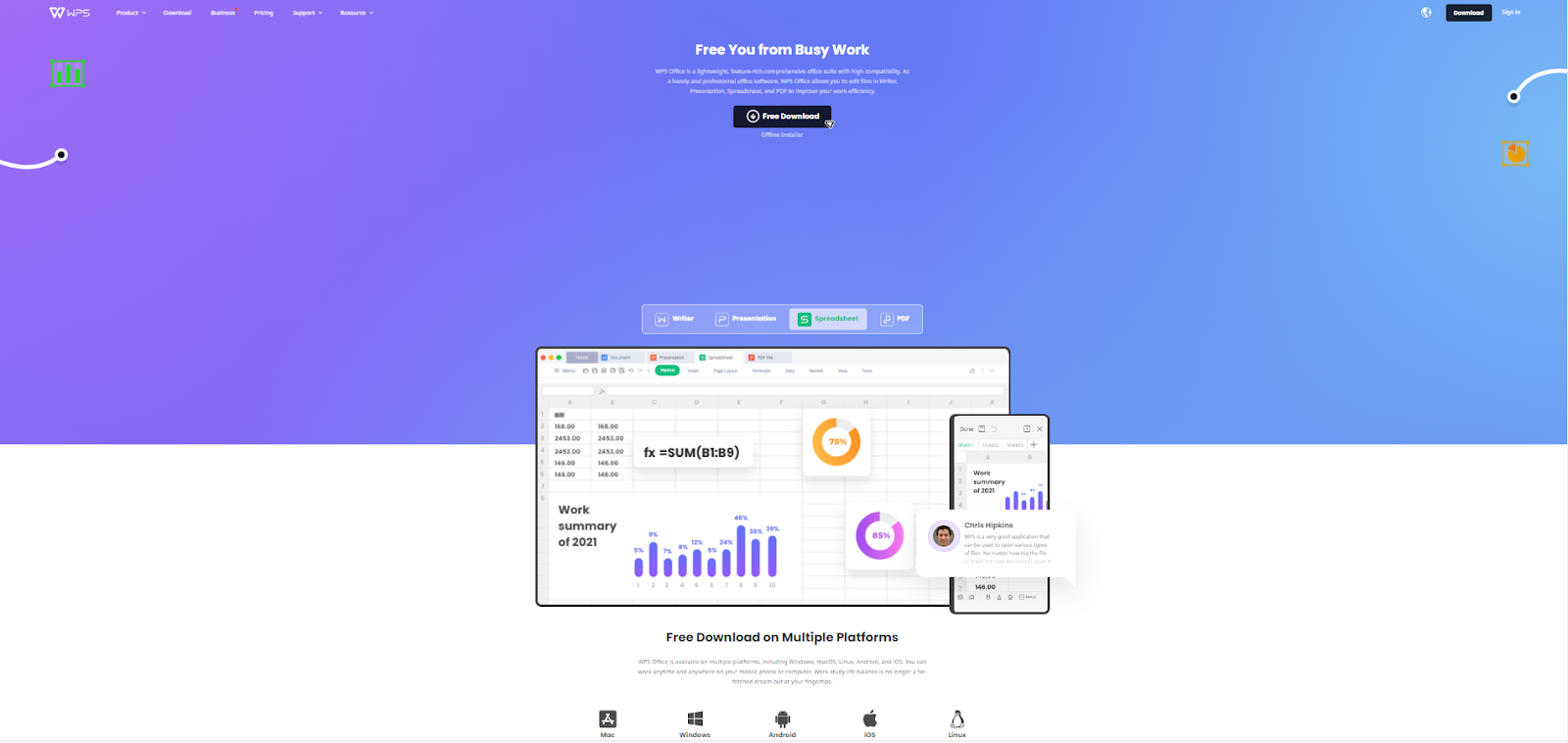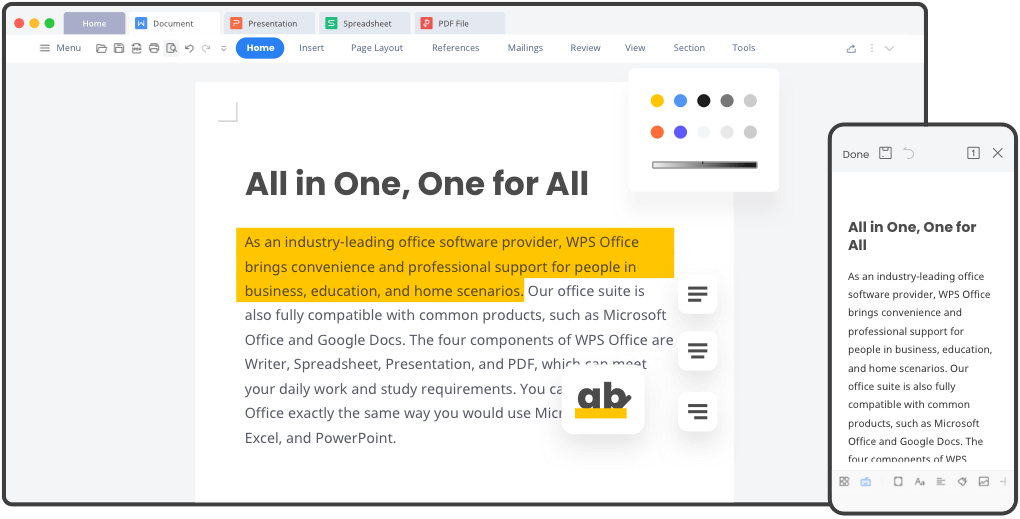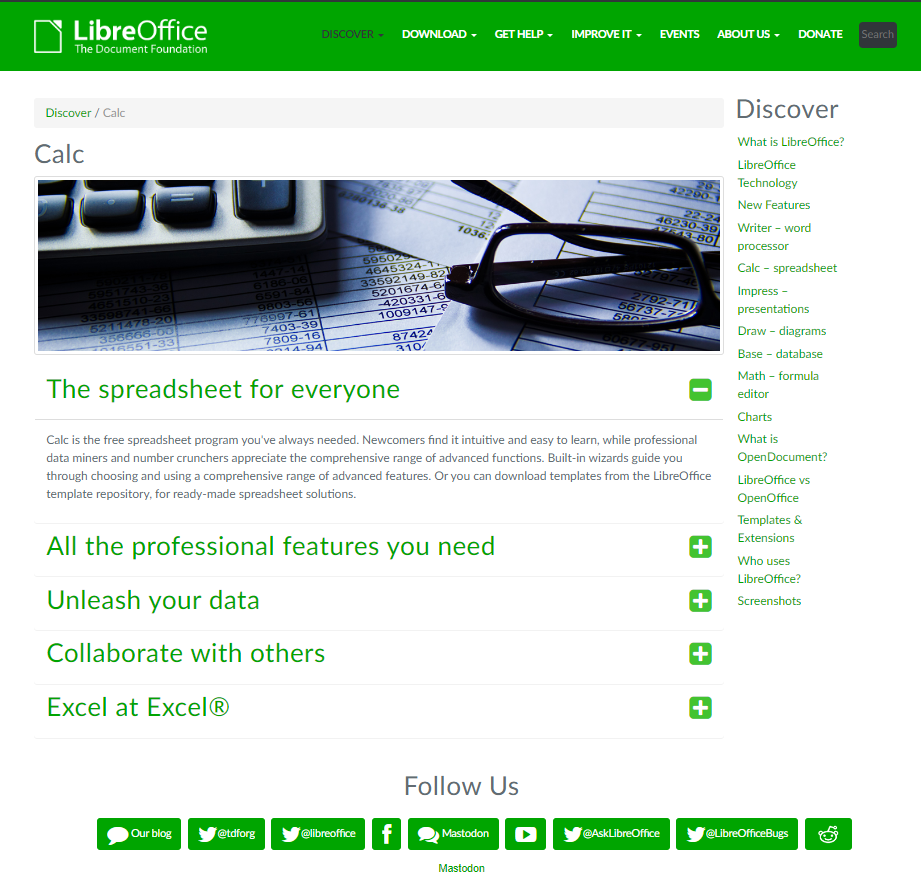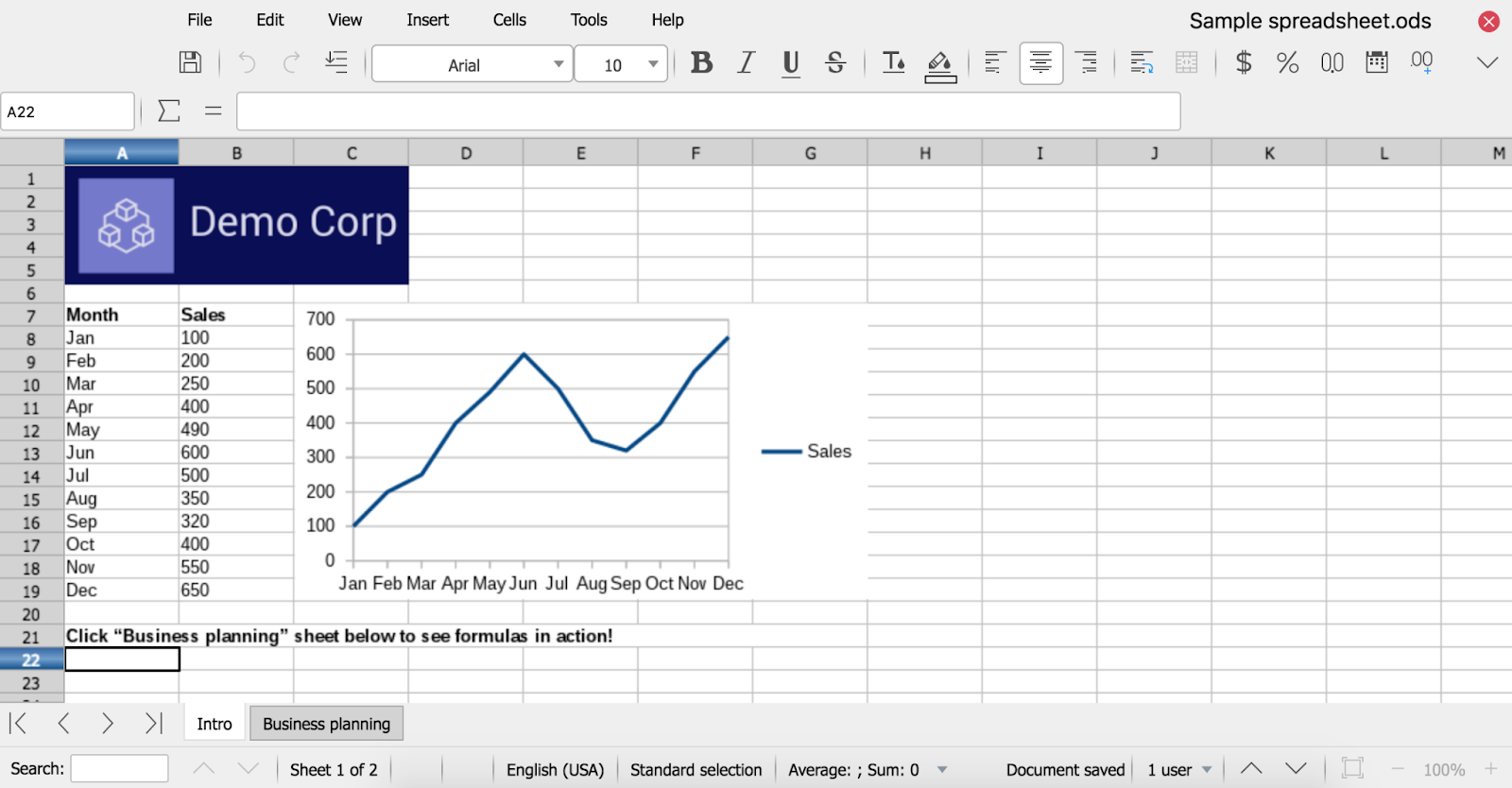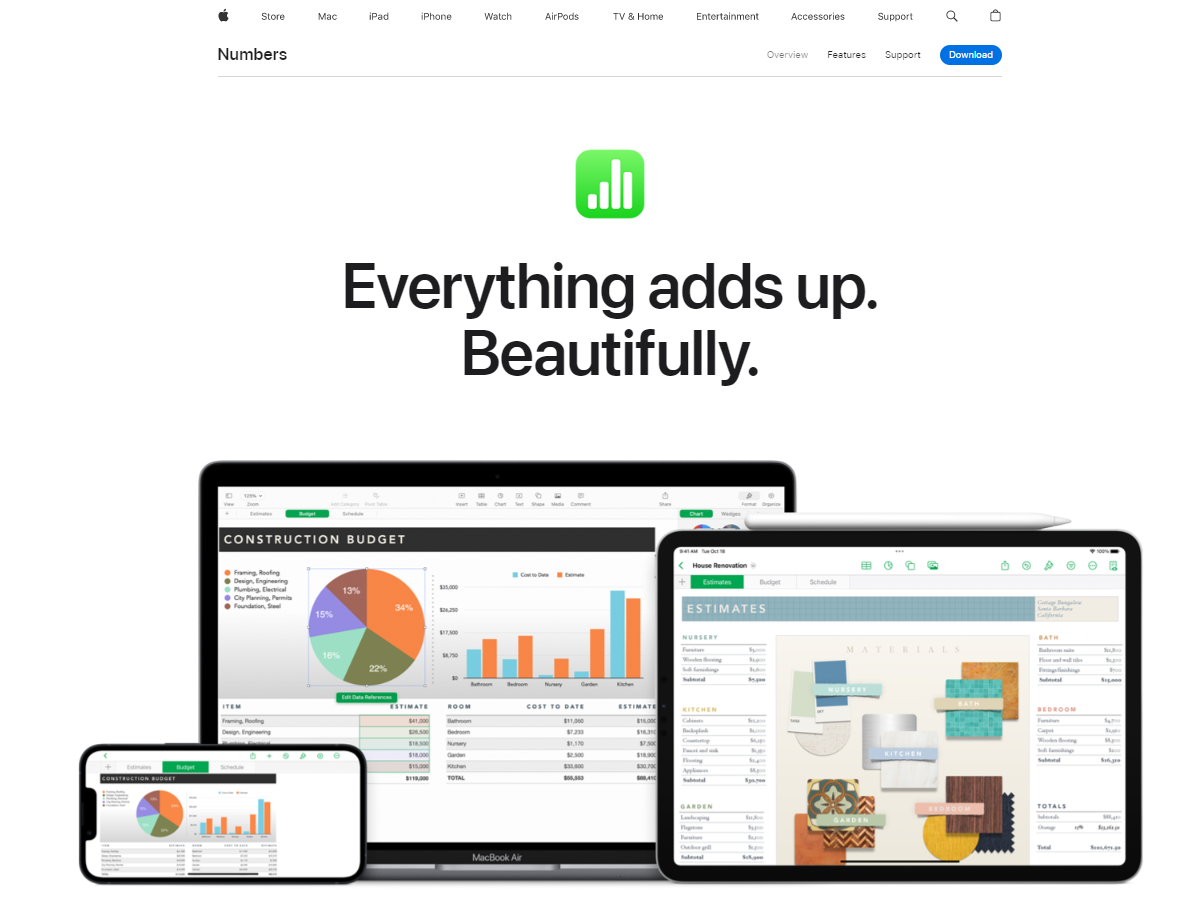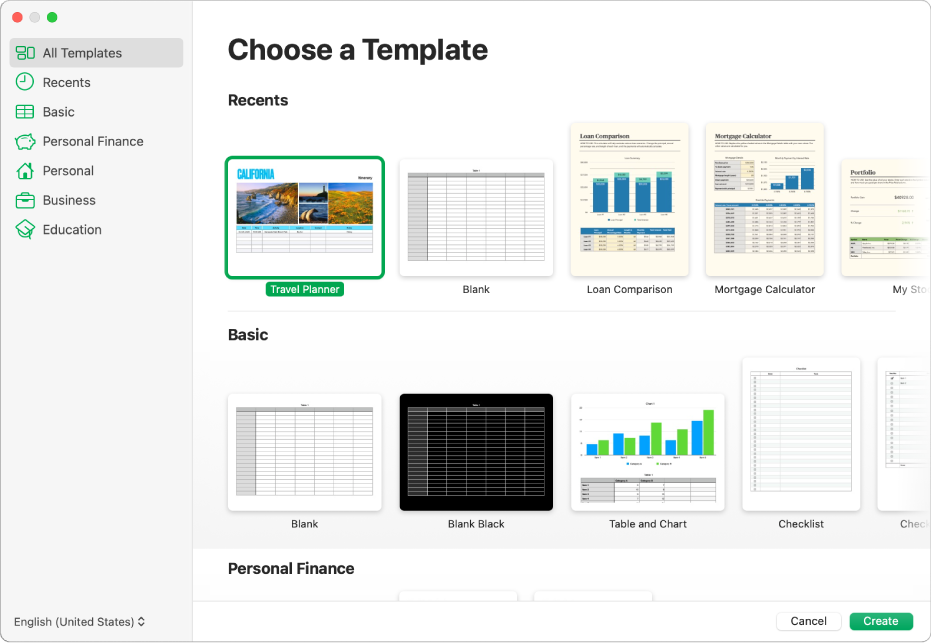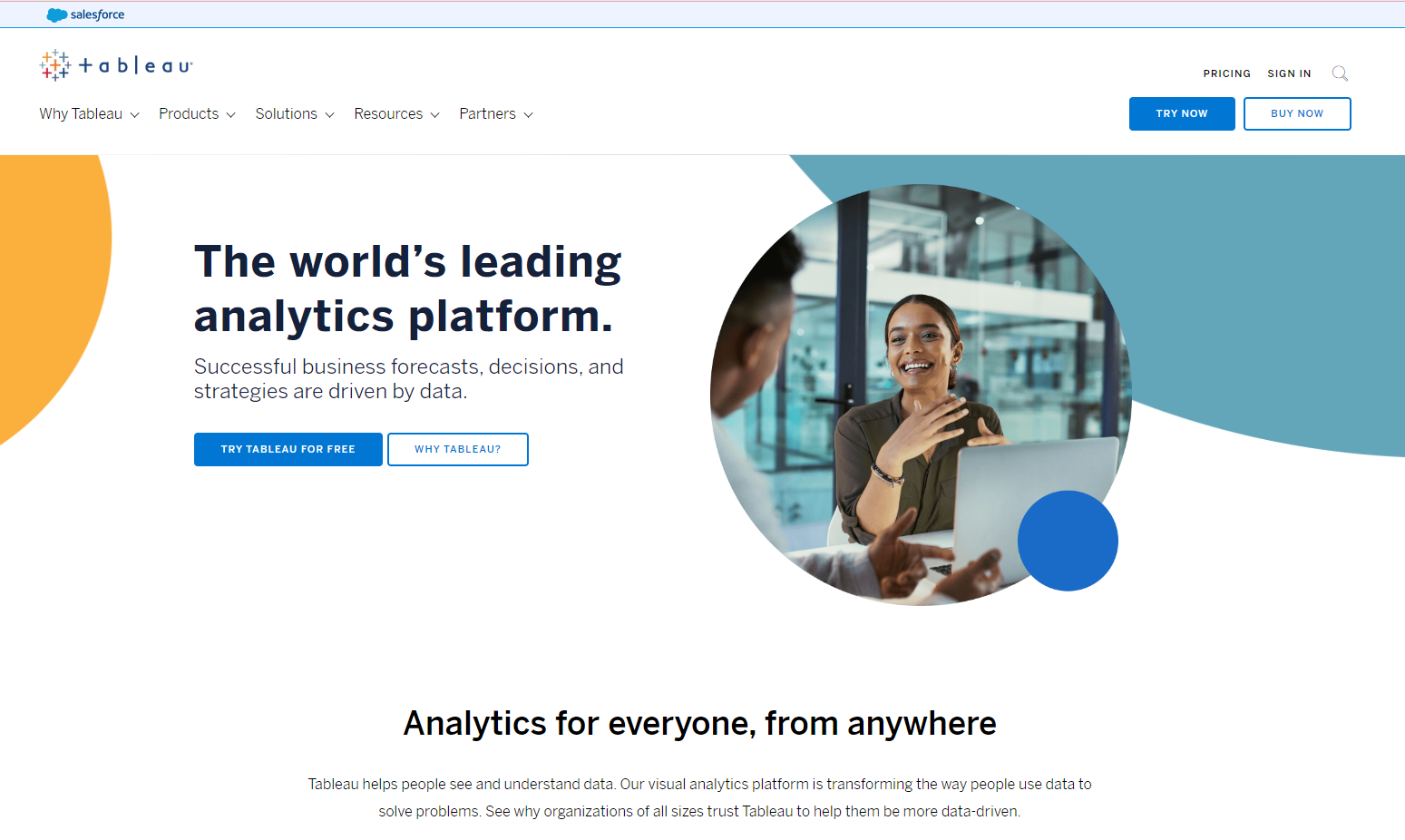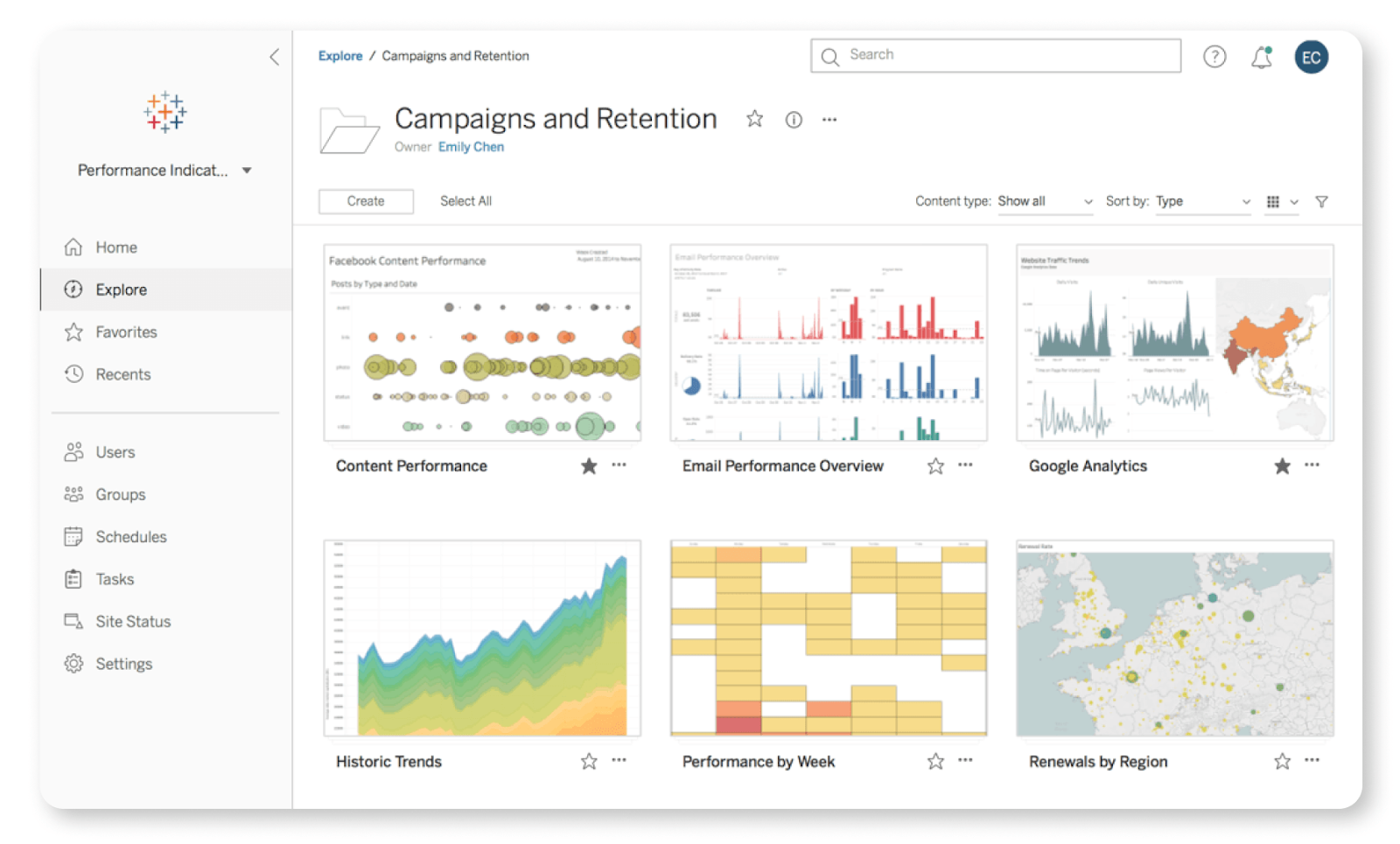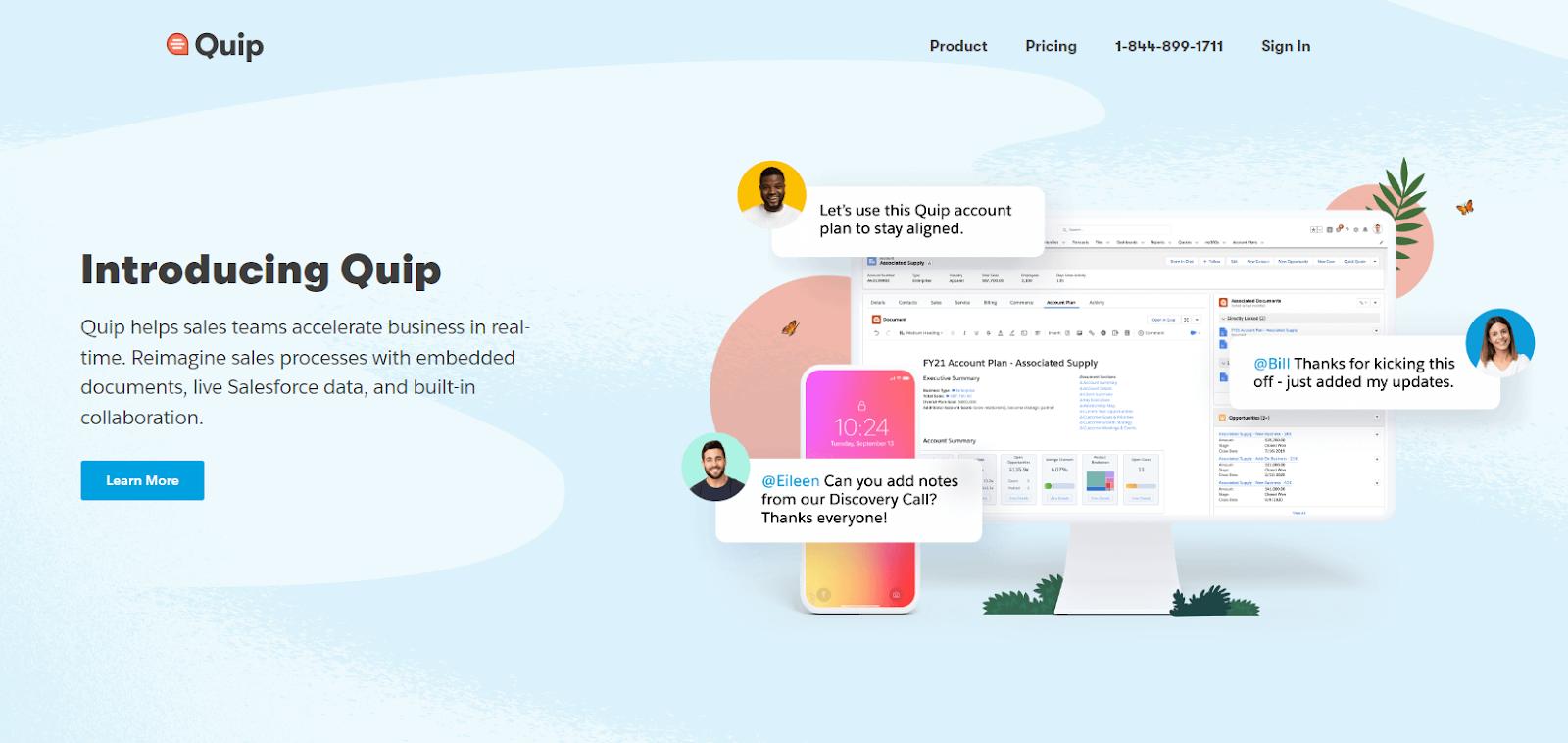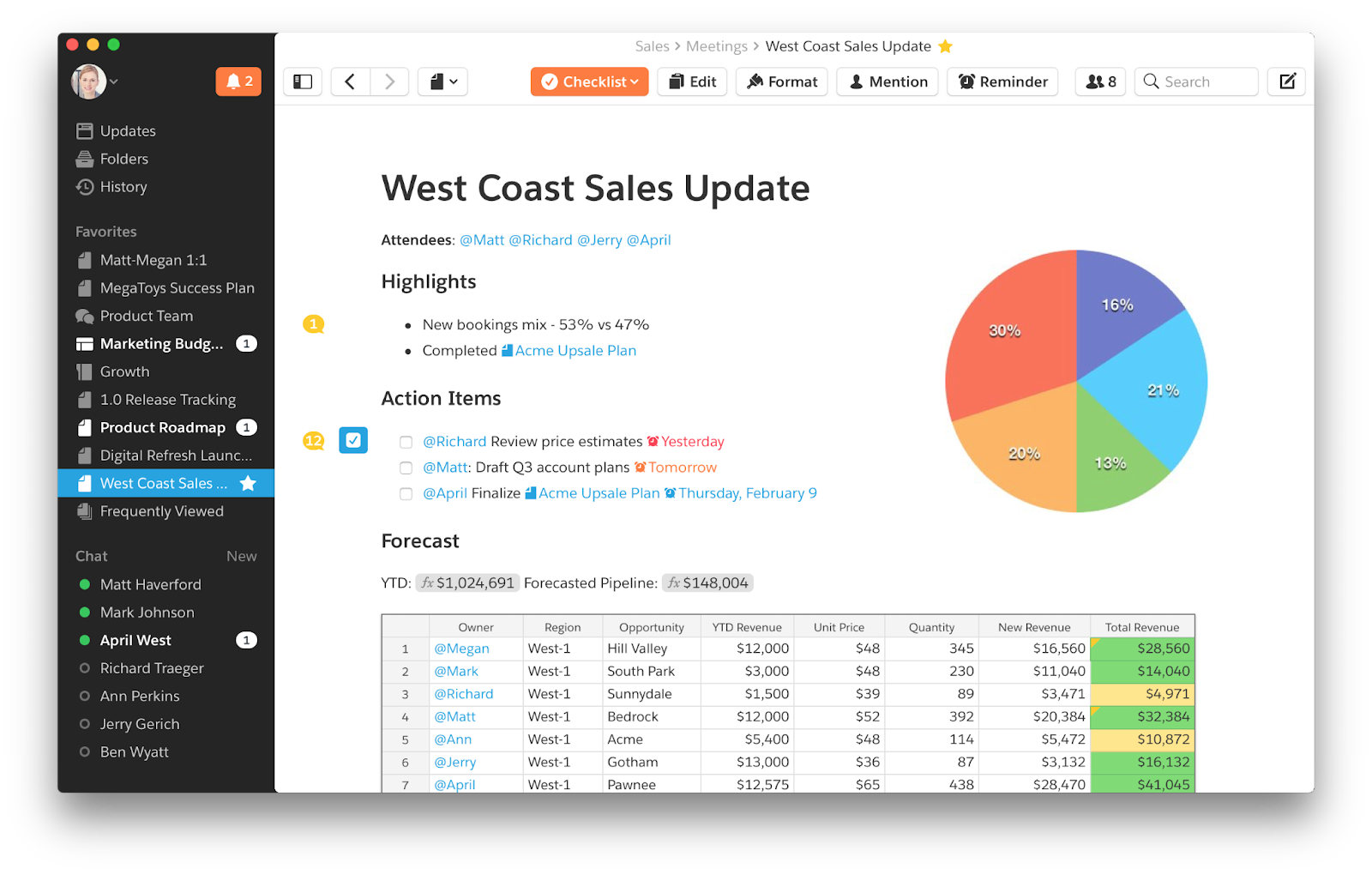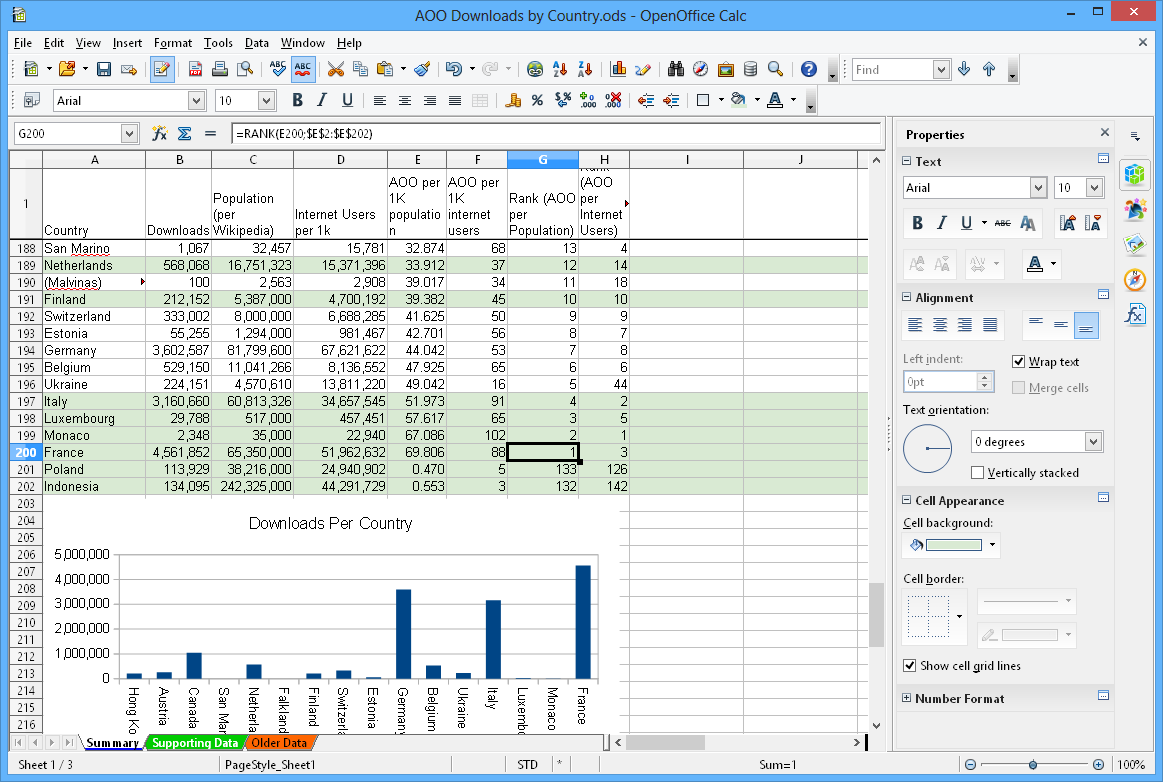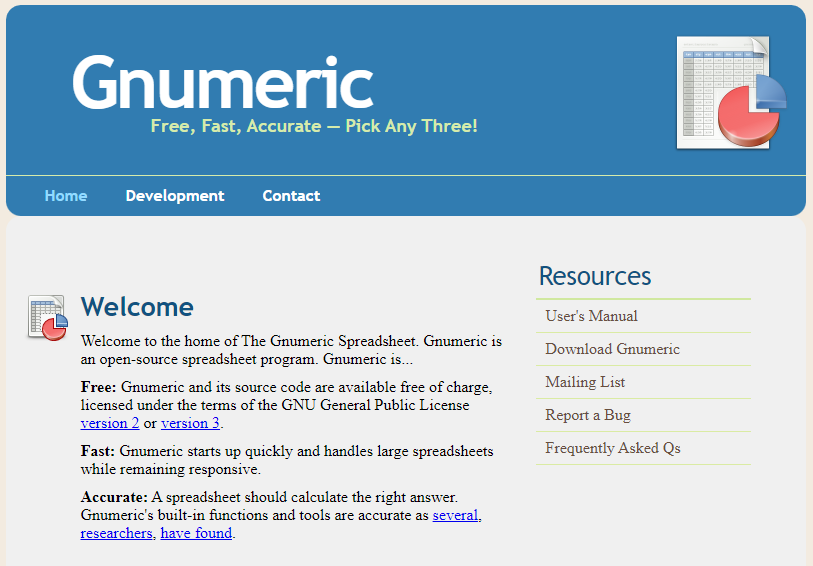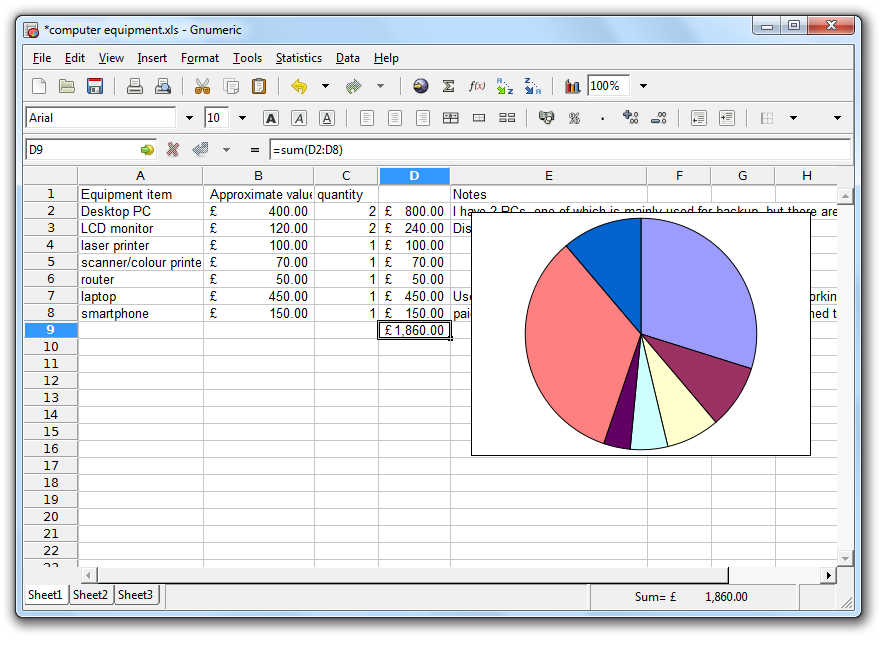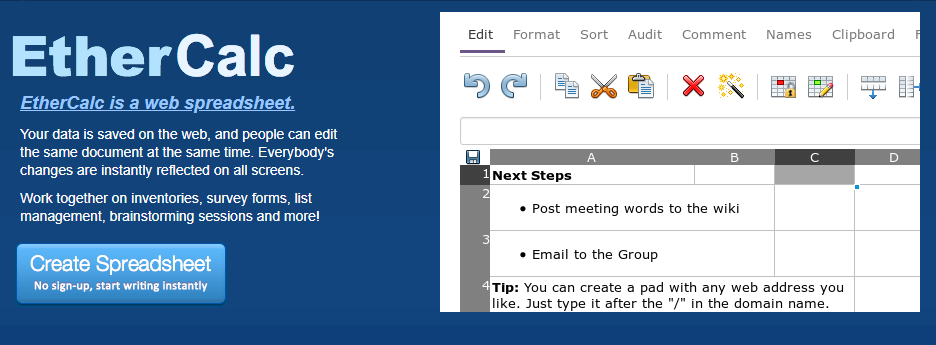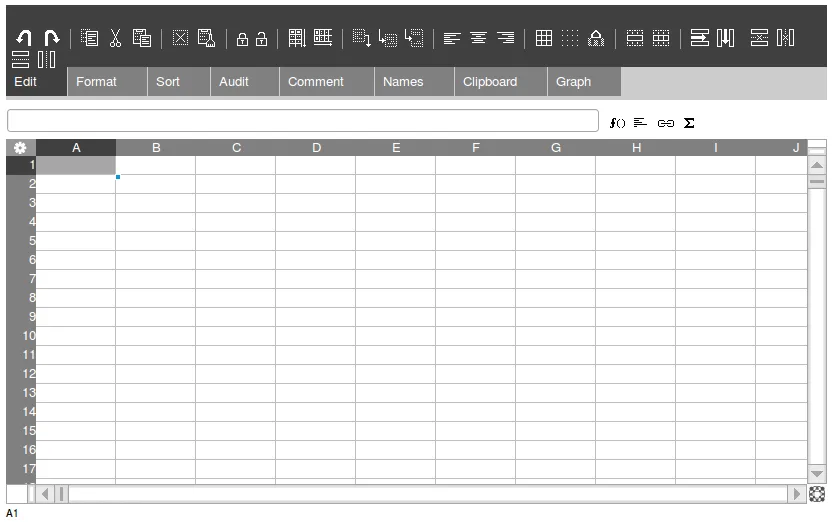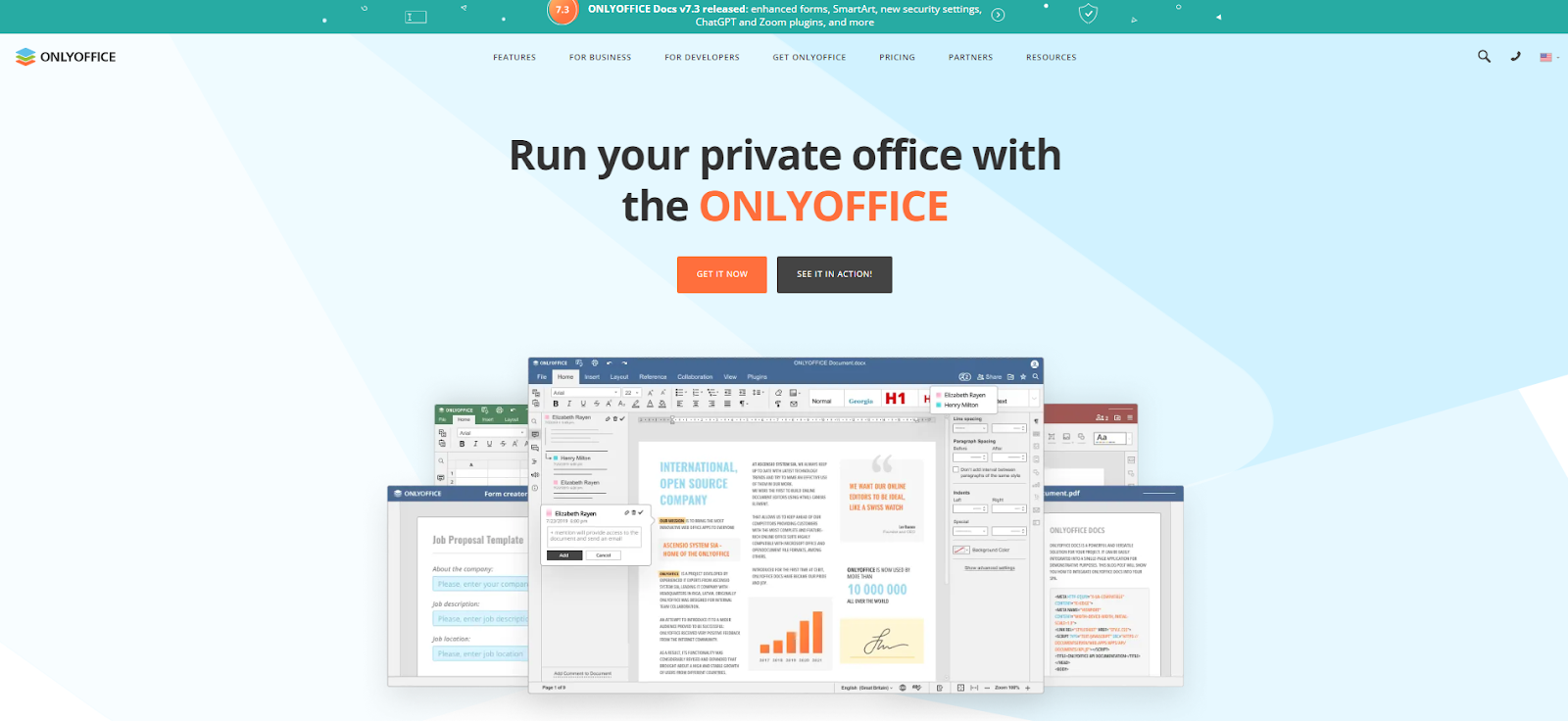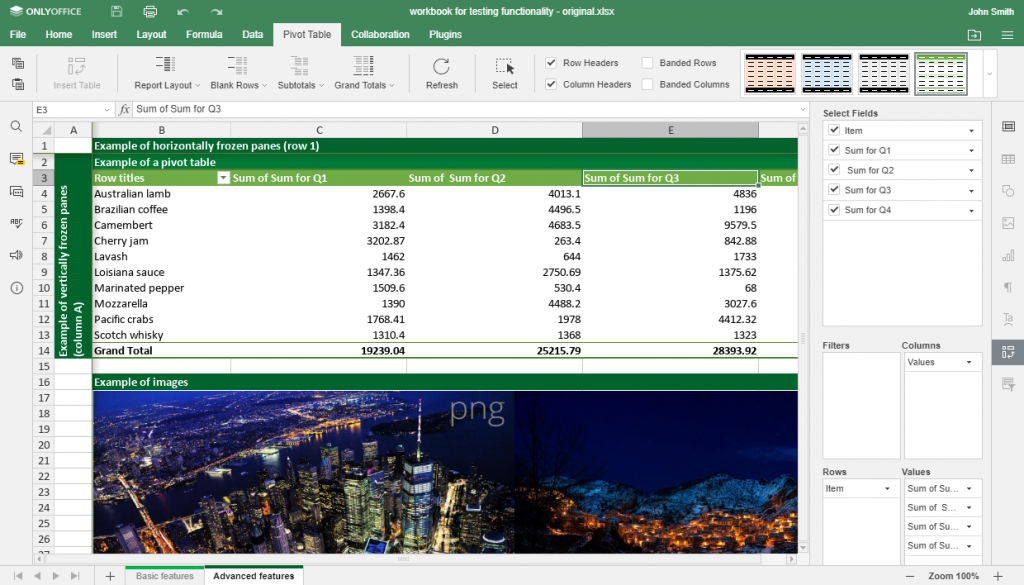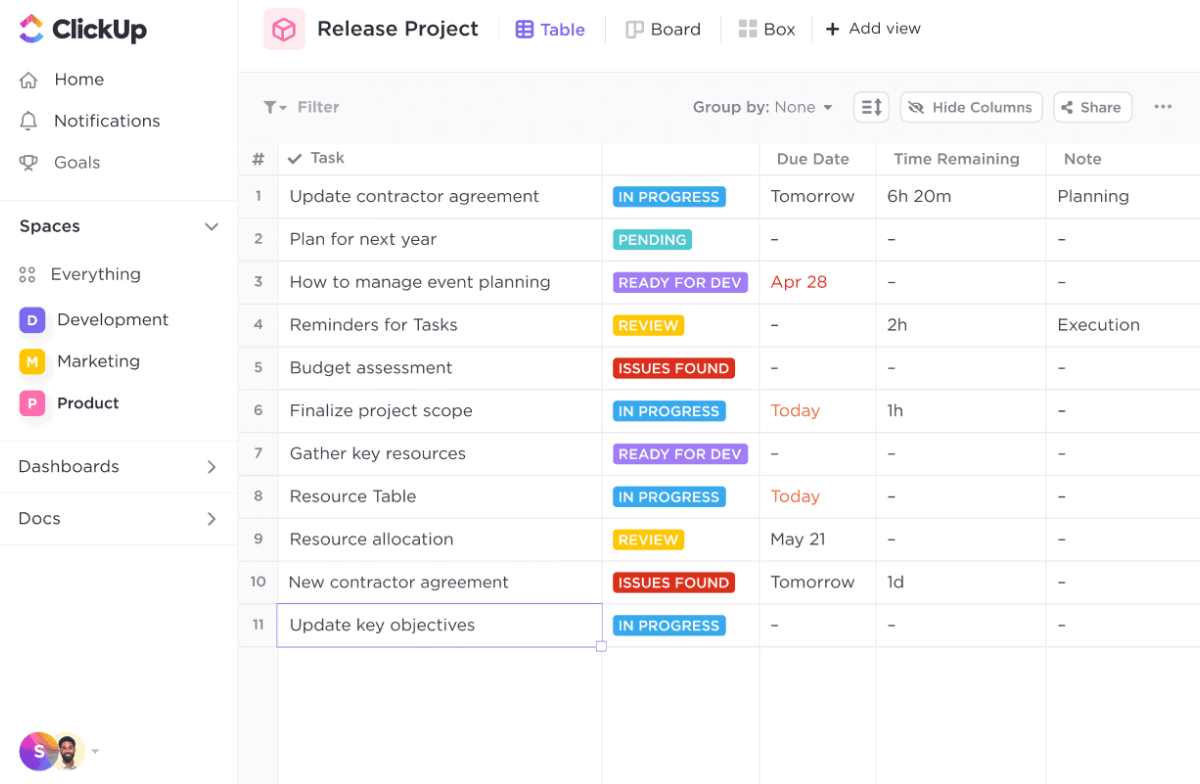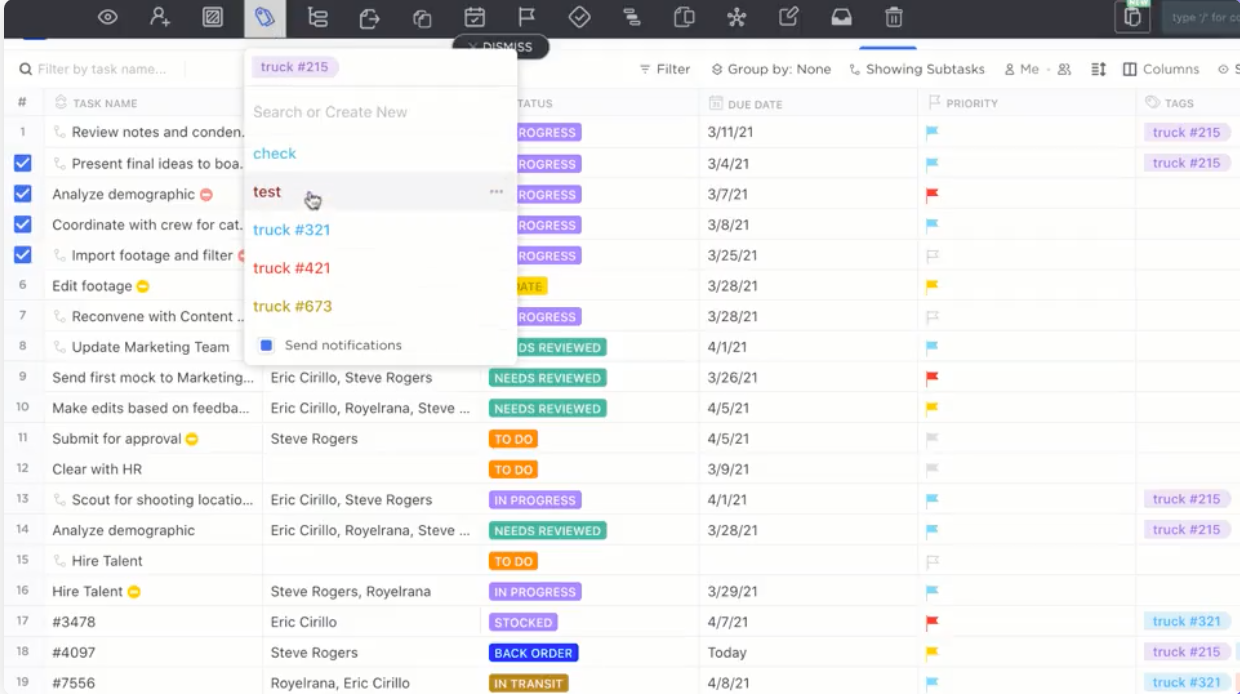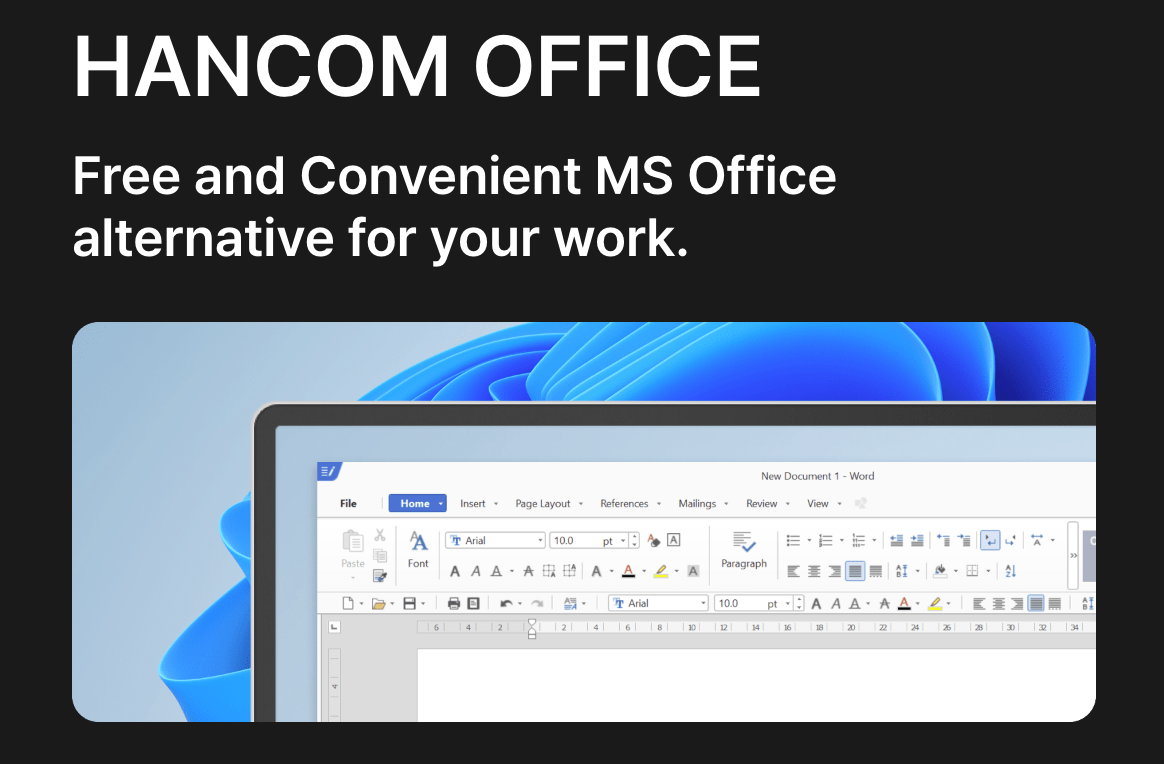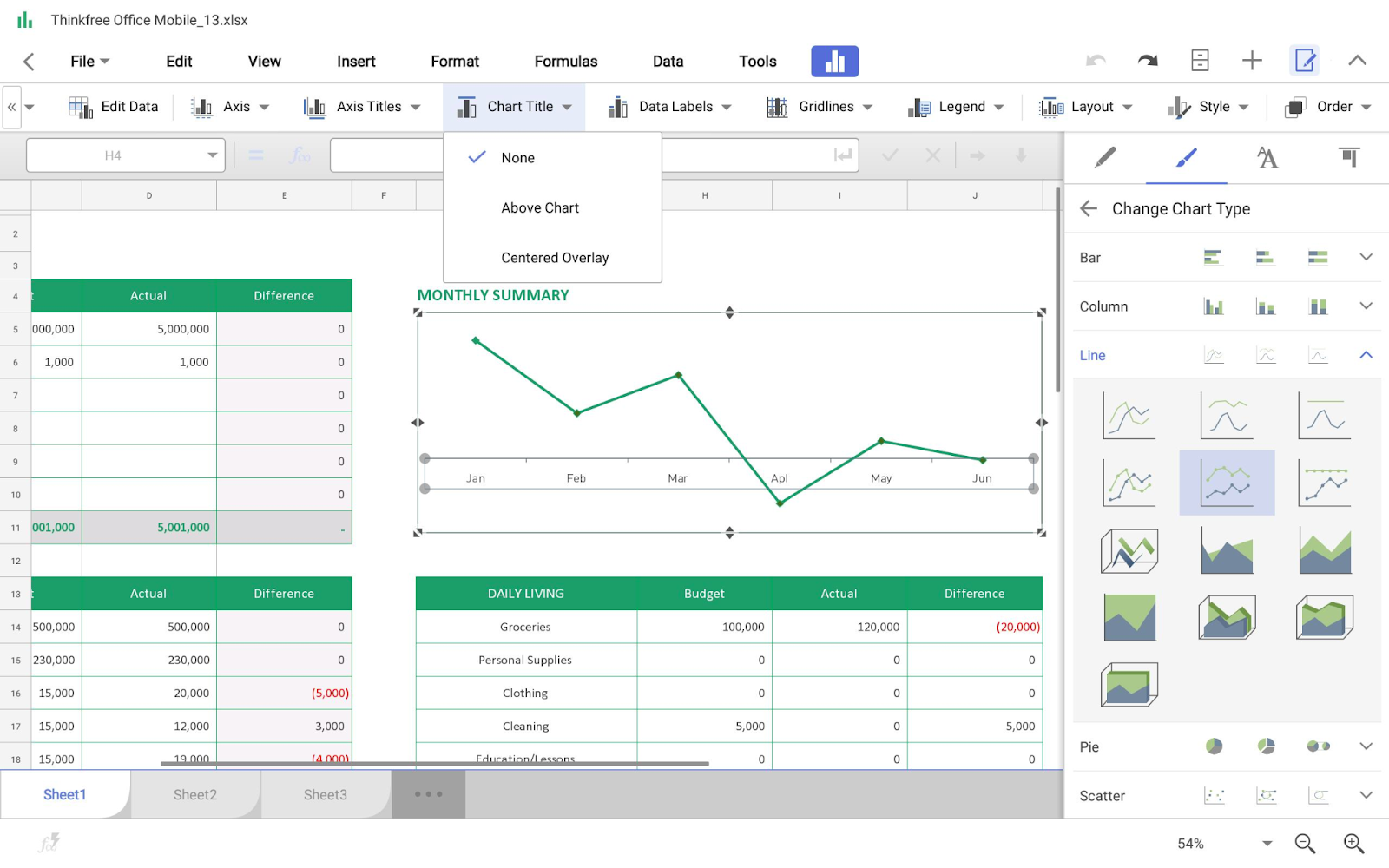The 15 Best Excel Alternatives
Excel is one of the world’s most popular spreadsheet programs, with an estimated 1.1 billion people using it for data organization, analysis, and reporting.
While it’s a commendable data system for teams within a business, it’s not free. A standalone copy of Excel costs $159.99, and a personal Office subscription is $69.99 per year for one user.
Microsoft Excel might be the big cheese of data analysis and management, but it’s not the only tool in town.
So, whether you’re looking for a free alternative, a cloud-based solution, or a tool with more advanced features, this article has something for you.
1. Google Sheets
- Price: Free for personal use and small teams; paid plans start at $6 a user per month for business teams.
- Best for: Teams already using Google Drive.
- What we like: This is the best, free Excel alternative that offers real-time collaboration.
Brought to you by the Google Drive suite of apps, Google Sheets is a top-tier choice for anyone looking for an Excel alternative.
This cloud-based spreadsheet app has many of the same features as Excel (charts, formulas, and real-time collaboration), making it the best free Excel alternative.
That said, if you don’t mind paying a fee, you can get more storage and advanced features with other tools on this list.
Pros
- Free to use
- Easy collaboration
- Cloud-based and accessible from anywhere
Cons
- Limited features compared to Excel
- Can be slower than desktop applications
- May have compatibility issues with Microsoft Office files
2. Airtable
- Price: Free for personal use and small teams; paid plans start at $12 a user per month for business teams.
- Best for: Teams that need a database solution.
- What we like: Airtable’s advanced features combine spreadsheet and database components.
Airtable is a cloud-based platform that combines spreadsheet and database features. It’s designed to be flexible and customizable and offers a variety of views, including grid, calendar, and Kanban.
Pros
- Combines spreadsheet and database features, offering a unique approach to data management
- Designed to be a collaborative solution for teams, including real-time collaboration and commenting features
- Offers a range of templates for different use cases, including project management and content planning
- Integrates with a range of other apps and platforms, including Slack and Zapier
- Offers a free version, as well as paid options for businesses that need more storage or advanced features
Cons
- Limited advanced features compared to other spreadsheet applications
- May not be suitable for large datasets or complex data analysis
- Customization options may be limited for some users
3. Zoho Sheet
- Price: Free for personal use and small teams; paid plans start at $5 a user per month for business teams.
- Best for: Businesses that need a complete business solution.
- What we like: Zoho Sheets reduce the time spent thinking about version control or projects requiring multiple people. Since it’s cloud-based, other team members can see the document in real time.
Zoho Sheet is a cloud-based spreadsheet application that’s part of the Zoho suite of apps. It offers many of the same features as Excel, including charts and formulas, and also integrates with other Zoho apps, such as Zoho CRM and Zoho Projects.
Pros
- Offers a range of spreadsheet features, including charts and formulas
- Supports Microsoft Office files
- Integrates with other Zoho apps, including Zoho CRM and Zoho Projects
- Offers a free version, as well as paid options for businesses that need more storage or advanced features
Cons
- Limited advanced features compared to other spreadsheet applications
- Not as well-known as some other alternatives, so support options may be limited
4. Smartsheet
- Price: Offers a free trial, but paid plans start at $14 a user per month. It’s $25 a user per month for business teams.
- Best for: Teams that need a project management solution.
- What we like: Smartsheet is your one-stop shop for planning, tracking, automating, and reporting on all your projects. You can keep everyone in the loop so that nothing falls behind schedule.
Smartsheet is a cloud-based platform that’s designed for project management. It offers a variety of features, including Gantt charts, resource management, and collaboration tools.
It also integrates with other apps, including Microsoft Office and Google Drive. Smartsheet offers a free trial and paid options for businesses that need more storage or advanced features.
Pros
- Combines spreadsheet and project management features, offering a unique approach to task and project management
- Offers a range of templates for different use cases, including project tracking and budget planning
- Integrates with a range of other apps and platforms, including Salesforce and Jira
Cons
- Limited advanced features compared to other spreadsheet applications
- May not be suitable for complex data analysis or financial modeling
- Customization options may be limited for some users
5. WPS Office
- Price: Free for personal use and small teams, paid plans start at $29.99 a year for premium features.
- Best for: Individuals and businesses who need a full-featured office suite.
- What we like: WPS is the bomb if you need an all-in-one software for your office tasks. The features are straightforward and user-friendly, so you don’t need to be a tech guru to figure it out.
WPS Office is a suite of office applications that includes a word processor, presentation software, and spreadsheet application. It offers many of the same features as Excel, including charts and formulas, and also supports Microsoft Office files.
Pros
- Offers a full suite of office productivity tools, including spreadsheet, document editing, and presentation software
- Supports a wide range of file formats, including Microsoft Office files
- Integrates with other WPS apps, including WPS PDF and WPS Cloud
Cons
- May have compatibility issues with Microsoft Office files
- Limited advanced features compared to other spreadsheet applications
- Not as well-known as some other alternatives, so support options may be limited
6. LibreOffice Calc
- Price: Free and open-source.
- Best for: Individuals and businesses who need a full-featured spreadsheet application for free.
- What we like: With LibreOffice, your papers will look slick and organized, no matter what they’re for. The secret is in LibreOffice’s powerful styling system and structuring tools. These features do all the heavy lifting so that you can focus on your content.
LibreOffice Calc is a free and open-source spreadsheet application part of the LibreOffice suite of apps. It offers many of the same features as Excel, including charts and formulas, and also supports Microsoft Office files.
LibreOffice Calc is highly customizable and offers a variety of extensions.
Pros
- Free and open-source
- Includes advanced features
- Supports Microsoft Office files
Cons
- Not as user-friendly as other alternatives
- Limited support options
7. Numbers (Apple)
Price: Free for Mac/iOS users.
Best for: Individuals and businesses that use Apple products.
What we like: Great for Apple users, this tool makes crunching numbers and entering data easy. Because it’s part of the Apple ecosystem, you get top-notch security to keep all your sensitive info safe and sound.
Numbers is a spreadsheet application that’s part of the Apple iWork suite of apps. It’s designed specifically for Apple users and offers many of the same features as Excel, including charts and formulas.
Numbers also integrates with other Apple apps, including Keynote and Pages.
Pros
- Free to use for Apple users
- Integrates with other Apple apps
- User-friendly interface
Cons
- Limited collaboration features
- Limited advanced features compared to Excel
- Only available on Apple devices
8. Tableau
- Price: Offers a free trial; paid plans start at $12 a user per month for individuals and $70 a user per month for business teams.
- Best for: Businesses that need advanced data visualization tools.
- What we like: Great for data visualization, Tableau is a real champ when it comes to crunching your data quickly. It hooks up directly to your Excel spreadsheets, so you don’t have to ditch them. Plus, with Tableau, you get sweet visualizations that are easy on the eyes.
Tableau is a data visualization tool that allows users to create interactive dashboards, reports, and charts. It offers advanced features for data analysis, including data blending and mapping.
Tableau is a great choice for businesses that need to visualize complex data meaningfully.
Pros
- Great for data visualization
- Offers advanced features for data analysis
- Offers a free trial
Cons
- Expensive for paid options
- Steep learning curve for advanced features
- Requires some knowledge of data analysis
9. Quip
- Price: Free for personal use; paid plans start at $10 a user per month for business teams.
- Best for: Teams that need a collaborative solution that integrates communication tools.
- What we like: Quip combines spreadsheet and communication features. This tool is a game-changer when taking notes, editing documents, and organizing task lists with your team and co-workers. It makes you a pro at all these tasks in no time!
Quip is a cloud-based platform that combines spreadsheet and communication features. It’s designed as a team solution with real-time collaboration and chat features. Quip also integrates with other apps, including Salesforce and Slack.
Pros
- Combines spreadsheet and communication features
- Real-time collaboration and chat features
- Integrates with other apps
Cons
- Limited advanced features compared to other alternatives
- Limited formatting options
- Limited customization options
10. Calc (Apache OpenOffice)
- Price: Free and open-source.
- Best for: Individuals and businesses who need a full-featured spreadsheet application for free.
- What we like: Open-source and customizable, Calc boasts the capability to effortlessly open and save spreadsheets in the Microsoft Excel file format. The software offers many features that outclass Excel, such as a system that automatically creates a series for graphing based on the user’s data layout.
Calc is a free and open-source spreadsheet application that’s part of the Apache OpenOffice suite of apps.
It offers many of the same features as Excel, including charts and formulas, and also supports Microsoft Office files. Calc is highly customizable and offers a variety of extensions.
Pros
- Free and open-source
- Includes advanced features
- Supports Microsoft Office files
Cons
- May have compatibility issues with Microsoft Office files
- Not as user-friendly as other alternatives
- Limited support options
11. Gnumeric
- Price: Free and open-source.
- Best for: Individuals who need a lightweight and free spreadsheet application.
- What we like: Gnumeric is the ultimate tool for keeping track of information in lists, organizing numeric values in columns and rows, and executing complex calculations easily. Its unique feature set lets you define each calculation step and modify specific steps later, giving you complete control over your work.
Gnumeric is a free and open-source spreadsheet application designed to be lightweight and fast.
It offers many of the same features as Excel, including charts and formulas, and also supports Microsoft Office files. Gnumeric is a great choice for individuals who need a simple and free spreadsheet application.
Pros
- Free and open-source
- Lightweight and fast
- Supports Microsoft Office files
Cons
- Limited advanced features compared to Excel
- Limited support options
12. EtherCalc
- Price: Free and open-source.
- Best for: Individuals and businesses who need a simple cloud-based spreadsheet application.
- What we like: Cloud-based and open-source, Ethercalc is a versatile tool for small to mid-sized businesses in finance and healthcare. It has real-time data pulled from third-party apps and can work with CSV, Microsoft Excel, and JSON files.
EtherCalc is a cloud-based and open-source spreadsheet application designed to be simple and lightweight. It offers basic features for creating and editing spreadsheets and allows real-time collaboration.
Pros
- Cloud-based and open-source
- Simple and lightweight
- Real-time collaboration features
Cons
- Limited advanced features compared to other alternatives
- Limited formatting options
- Limited customization options
13. OnlyOffice
- Price: Free for personal use and small teams; paid plans start at $5 a user per month for business teams.
- Best for: Businesses that need a full-featured office suite.
- What we like: OnlyOffice offers a full suite of office applications. It is a free, open-source system that combines document, project, customer relationship, and email management in one place.
OnlyOffice is designed to be a complete business solution, offering a range of features for team collaboration, including document sharing, real-time collaboration, and version control.
It also integrates with a range of other apps and platforms, including Nextcloud and ownCloud.
Pros
- Full suite of business tools, including spreadsheet, document editing, and presentation software
- Offers advanced collaboration features, including real-time collaboration, document sharing, and version control
- Integrates with a range of other apps and platforms, including Nextcloud and ownCloud
Cons
- Limited advanced features compared to other spreadsheet applications
- Not as well-known as some other alternatives, so support options may be limited
14. ClickUp
- Price: Free; paid plans start at $5 a user per month.
- Best for: Individuals or teams who want a one-stop-shop for all their productivity needs.
- What we like: Since your Table is directly connected to your workflow in ClickUp, all of your progress, updates, and task statuses are automatically reflected as you go. You can even pull real-time reporting for a high-level overview of your work anytime.
ClickUp is an all-in-one productivity tool that individual users and teams rely on to manage and organize their projects in one place.
It offers hundreds of customizable features and over 15 unique ways to visualize your work, including a Table view.
Like Excel, Table view lets you manage, edit, and organize your tasks into clean columns and rows. Unlike Excel, you also gain the benefits of a powerful project management software to move your work along.
You can also collaborate in real time with team members.
Pros
- Great for data visualization
- An all-in-one productivity tool so you can manage and organize your projects in one place
- All of your progress, updates, and task statuses are automatically reflected as you go
Cons
- Can be complex and confusing for users
- Mobile app is limited
15. Hancom Office
- Price: Starts at $59 a user.
- What we like: Hancom Office offers four primary features, which are compatible with office programs: Word, Cell, Show, and PDF.
- Best for: Teams who want a full suite of tools and real-time collaboration with each other.
Hancom offers four primary features, which are compatible with office programs: Word, Cell, PDF, and Show.
The Excel alternative, Cell, lets you create spreadsheets and presentations and provides 1 GB of free online storage, and like Google Sheets, you can collaborate with colleagues on Hancom Office documents.
Most notably, Hancom allows you to edit and view your documents on your mobile device, if you want to change your spreadsheet away from your computer. Hancom doesn’t require any Office installation.
Pros
- Full suite of productivity tools
- Real-time collaboration features
- Mobile app allows you to work from anywhere
Cons
- Expensive for paid options
- Not many tutorials are available, so the learning curve may be steep
Something For Everyone
While Microsoft Excel remains the most widely used spreadsheet software, plenty of excellent alternatives are available for users looking for a more specialized or streamlined approach to data management.
Whether you need a collaborative solution for team projects, a more comprehensive suite of business tools, or a simple but effective spreadsheet editor, there’s an alternative out there that can meet your needs.
By considering the features and drawbacks of each option, you can choose the best Excel alternative for your individual requirements and work more efficiently and effectively with your data.


![Download 10 Excel Templates for Marketers [Free Kit]](https://no-cache.hubspot.com/cta/default/53/9ff7a4fe-5293-496c-acca-566bc6e73f42.png)
